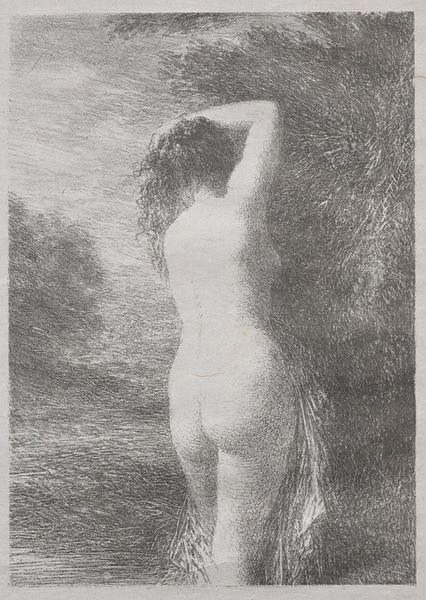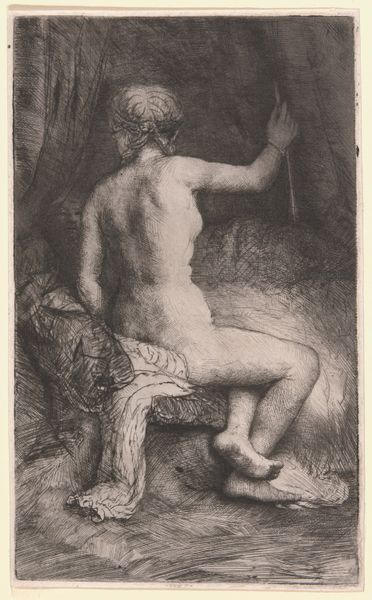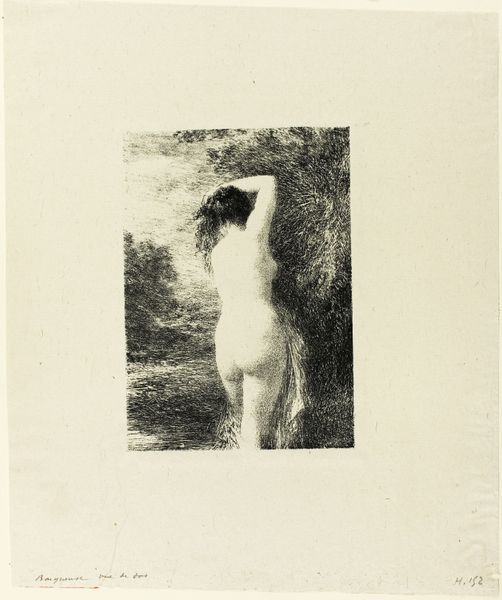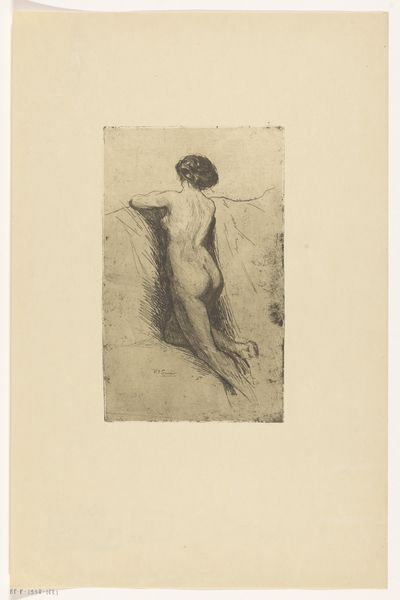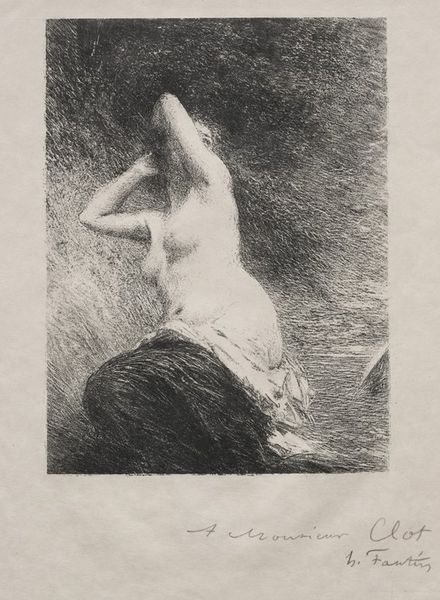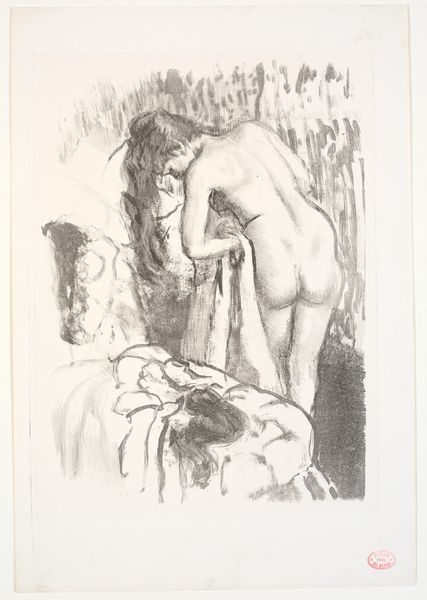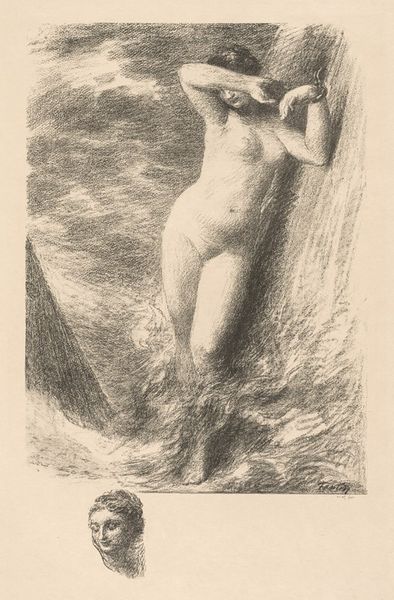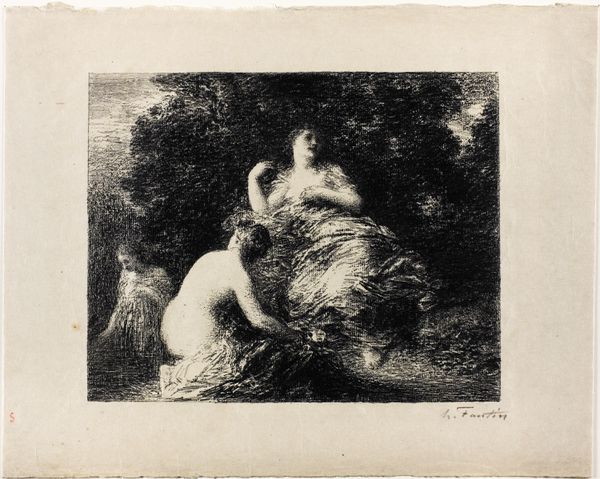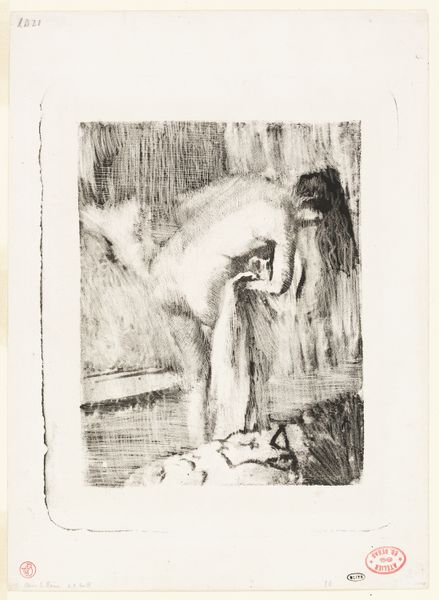
Dimensions: height 208 mm, width 151 mm
Copyright: Rijks Museum: Open Domain
Curator: This work, “Standing Bather,” was created by Henri Fantin-Latour in 1899. It's an etching currently housed here at the Rijksmuseum. Editor: My first impression is a sense of hazy vulnerability. The figure seems lost in her own world, and the soft grays create an almost dreamlike quality. Curator: Precisely. Latour, steeped in symbolism and romanticism, often explored themes of mythology and the female form, reflecting broader societal anxieties about modernity and the idealization of beauty. Think about the institutional context of displaying the female nude and who had access. Editor: So, considering the politics of the male gaze prevalent at the time, does this depiction perpetuate or challenge those dynamics? I’m particularly interested in how the averted gaze and obscured facial features contribute to this dialogue. Is she empowered or objectified? Curator: It's a layered issue. On one hand, the artist was part of a privileged, male-dominated art world that shaped the reception of the artwork. Yet, within Symbolist aesthetics, we also see attempts to move beyond pure objectification. Her introspective stance, the focus on the emotional landscape... it hints at an interiority not often granted to female subjects in art. We must ask, who is her audience? The fact that it is an etching, designed to be consumed on a smaller scale and often within the domestic sphere, allows for an alternative point of access. Editor: Absolutely. The medium itself adds another layer. The intimacy inherent in printmaking contrasts with the grand scale of academic painting. It potentially offers a more accessible, democratized viewing experience, disrupting traditional art hierarchies. Furthermore, the ethereal quality achieved through the etching technique transforms her into less of a solid body, more of a figment of an artistic or psychic space. Curator: Right, by engaging with social, cultural, and artistic context we begin to consider the multiple facets that contribute to the work's historical legacy and enduring power. It makes one ponder about our engagement with representations of the female form then and now. Editor: Definitely. Fantin-Latour provides a snapshot into a transitional era that encourages critical discussion around female identity in art, both past and present.
Comments
No comments
Be the first to comment and join the conversation on the ultimate creative platform.
